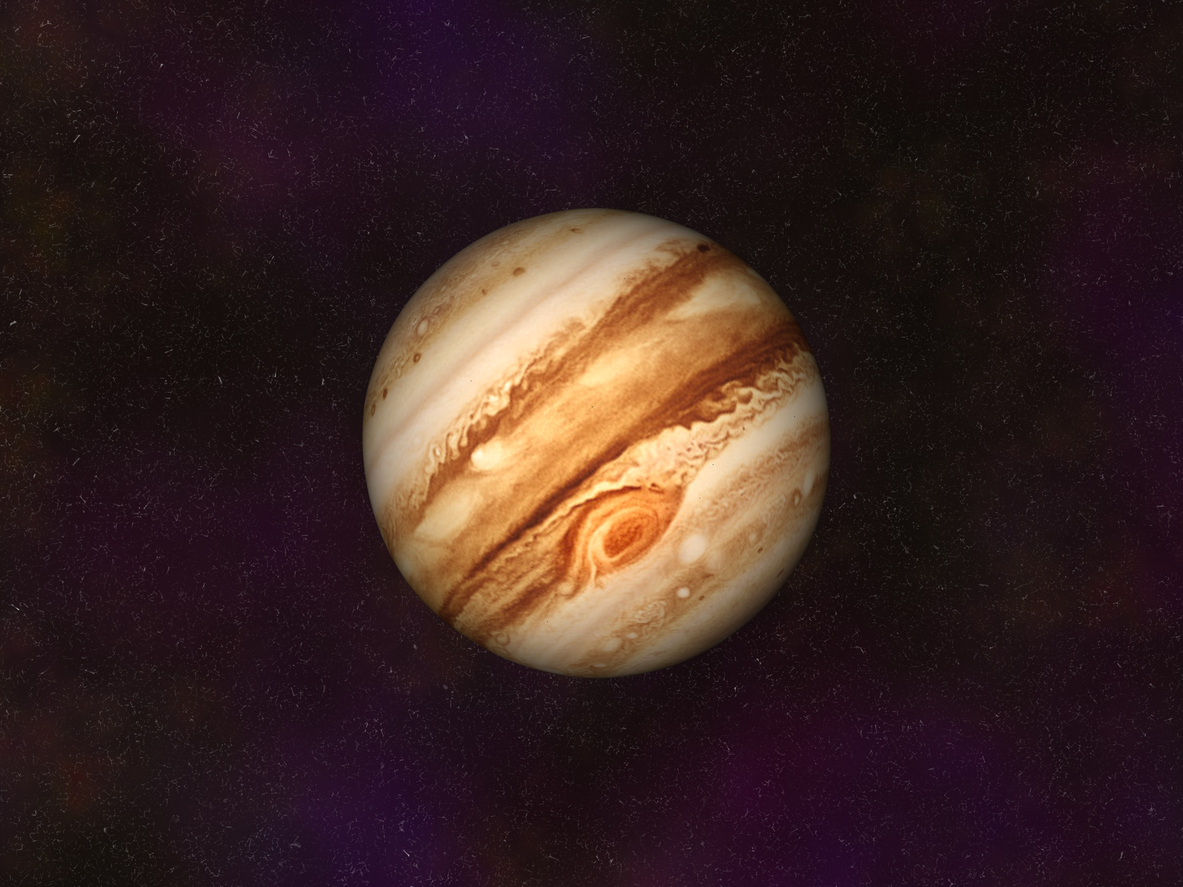Scientists have discovered something weird about Jupiter's magnetic field

Each planet in our solar system has its own weird quirk — Venus' poisonous atmosphere, Saturn's rings, or Mars' potential to harbor human life. In a new study published in the journal Nature, scientists have discovered something strange about Jupiter as well.
Jupiter, like Earth, has a magnetic field. But unlike Earth's, Jupiter's magnetic field isn't relatively symmetrical. Instead, its northern hemisphere and southern hemisphere have magnetic fields that look nothing alike, Gizmodo reported. Where Earth's magnetic field points pretty much straight up and down, like a bar magnet, Jupiter's magnetic field is more like "someone took a bar magnet, bent it in half, and splayed it at both ends," Science News explained.
"It's a baffling puzzle," said the study's lead author, Harvard Ph.D. student Kimberly Moore. But it might have something to do with the different compositions of Earth and Jupiter. On Earth, the magnetic field is created by the liquid iron that composes part of our planet's core — but we have no idea what Jupiter's core is made of, or if it has anything to do with the planet's magnetic field. Instead, scientists theorize that Jupiter's magnetic field is caused by the presence of metallic hydrogen among its gaseous structure, Sky & Telescope reported.
The Week
Escape your echo chamber. Get the facts behind the news, plus analysis from multiple perspectives.

Sign up for The Week's Free Newsletters
From our morning news briefing to a weekly Good News Newsletter, get the best of The Week delivered directly to your inbox.
From our morning news briefing to a weekly Good News Newsletter, get the best of The Week delivered directly to your inbox.
Scientists still don't know for sure what's causing the strange unevenness of Jupiter's magnetic field, or why it's "so complicated in the northern hemisphere but so simple in the southern hemisphere," Moore said. But they theorize that varying concentrations of this metallic hydrogen might be the underlying cause.
NASA's Juno orbiter, which collected the data used in this study, will continue to monitor the gas giant until 2022. Read more about the project at Gizmodo.
A free daily email with the biggest news stories of the day – and the best features from TheWeek.com
Shivani is the editorial assistant at TheWeek.com and has previously written for StreetEasy and Mic.com. A graduate of the physics and journalism departments at NYU, Shivani currently lives in Brooklyn and spends free time cooking, watching TV, and taking too many selfies.
-
 Could smaller cars bring down vehicle prices?
Could smaller cars bring down vehicle prices?Today’s Big Question Trump seems to think so, but experts aren’t so sure
-
 2025’s most notable new albums
2025’s most notable new albumsThe Week Recommends These were some of the finest releases of the past year
-
 Trump aims to take down ‘global mothership’ of climate science
Trump aims to take down ‘global mothership’ of climate scienceIN THE SPOTLIGHT By moving to dismantle Colorado’s National Center for Atmospheric Research, the White House says it is targeting ‘climate alarmism’
-
 US offers Ukraine NATO-like security pact, with caveats
US offers Ukraine NATO-like security pact, with caveatsSpeed Read The Trump administration has offered Ukraine security guarantees similar to those it would receive from NATO
-
 Hong Kong court convicts democracy advocate Lai
Hong Kong court convicts democracy advocate LaiSpeed Read Former Hong Kong media mogul Jimmy Lai was convicted in a landmark national security trial
-
 Australia weighs new gun laws after antisemitic attack
Australia weighs new gun laws after antisemitic attackSpeed Read A father and son opened fire on Jewish families at Sydney’s Bondi Beach, killing at least 15
-
 How Bulgaria’s government fell amid mass protests
How Bulgaria’s government fell amid mass protestsThe Explainer The country’s prime minister resigned as part of the fallout
-
 Benin thwarts coup attempt
Benin thwarts coup attemptSpeed Read President Patrice Talon condemned an attempted coup that was foiled by the West African country’s army
-
 Femicide: Italy’s newest crime
Femicide: Italy’s newest crimeThe Explainer Landmark law to criminalise murder of a woman as an ‘act of hatred’ or ‘subjugation’ but critics say Italy is still deeply patriarchal
-
 Brazil’s Bolsonaro behind bars after appeals run out
Brazil’s Bolsonaro behind bars after appeals run outSpeed Read He will serve 27 years in prison
-
 Americans traveling abroad face renewed criticism in the Trump era
Americans traveling abroad face renewed criticism in the Trump eraThe Explainer Some of Trump’s behavior has Americans being questioned